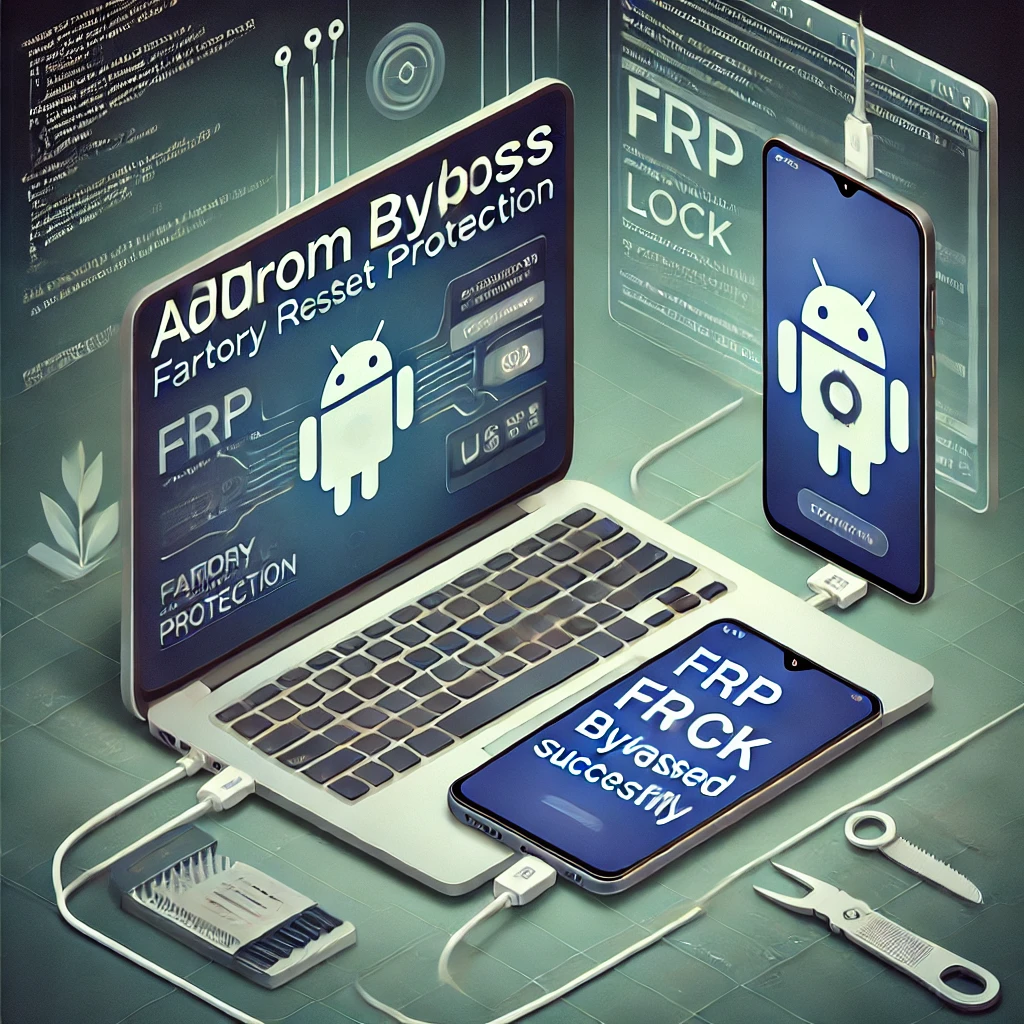
The Android ecosystem is vast, with millions of devices running on different firmware versions. One of the common issues users and developers face is Factory Reset Protection (FRP), a security feature designed to protect devices from unauthorized access. This is where the term “addrom bypass” gains prominence.
In this article, we’ll dive deep into:
- What Addrom Bypass is
- How it works
- A step-by-step guide to FRP Addrom solutions
- Developing custom ROMs for Android devices
- Practical tips for Android developers interested in custom ROM development
By the end of this guide, you’ll have a solid understanding of Addrom Bypass and the technical know-how to explore custom ROM development.
🔍 What is Addrom Bypass?
Addrom Bypass is a method used to bypass the Factory Reset Protection (FRP) lock on Android devices. FRP is a security measure introduced by Google to protect users’ data from unauthorized access after a factory reset. However, in legitimate cases—such as forgotten credentials—users or technicians may need to bypass this lock.
Common scenarios include:
- Resetting devices with forgotten credentials.
- Gaining access to test devices for development purposes.
- Troubleshooting devices with corrupted system firmware.
💡 Note: Bypassing FRP should always be done ethically and only on devices you own or have explicit permission to access.
🛠️ How Addrom Bypass Works
Addrom bypass techniques generally exploit vulnerabilities in the Android operating system or specific firmware versions. These methods involve:
- Accessing the recovery or bootloader mode.
- Using specific tools or scripts to disable FRP.
- Flashing custom firmware that circumvents security checks.
Addrom tools, such as FRP Addrom Vivo solutions, are tailored for specific devices and Android versions, including Addrom Bypass Android 12.
🧑💻 How to Perform Addrom Bypass
Here’s a general step-by-step guide to bypass FRP using Addrom techniques:
1️⃣ Prepare Your Device and Tools
- Fully charge your device.
- Download the required Addrom tool or script for your device model.
- Install the necessary drivers on your PC (e.g., ADB and Fastboot tools).
2️⃣ Boot the Device into Recovery or Fastboot Mode
- Power off your device.
- Press the specific key combination (varies by manufacturer) to boot into recovery or fastboot mode.
3️⃣ Connect the Device to Your PC
- Use a USB cable to connect the device to your computer.
- Ensure the PC detects the device in the appropriate mode.
4️⃣ Use the Addrom Tool
- Launch the Addrom bypass tool.
- Follow the on-screen instructions to disable FRP.
5️⃣ Verify and Reboot
- Once the FRP lock is bypassed, reboot your device.
- Set up your device without any restrictions.
💡 Pro Tip: If you encounter issues, ensure you’re using the correct tool version for your device. Search for specific tools like Addrom Vivo or Addromfrp tailored for your model.
🛡️ Understanding the Ethical Use of Addrom Bypass
While Addrom bypass is a powerful tool, it’s important to use it responsibly. Misusing FRP bypass tools on unauthorized devices can lead to legal consequences. Always ensure you have the device owner’s consent before proceeding.
🧑💻 How Android Developers Can Create Custom ROMs
Custom ROM development is a fascinating area for Android developers. A custom ROM replaces the stock firmware on an Android device, offering enhanced features, better performance, and a customized user experience.
Here’s how you can get started with custom ROM development:
Step 1: Understand the Basics
- Learn about the Android Open Source Project (AOSP).
- Understand the architecture of Android OS and its components.
Step 2: Set Up Your Development Environment
- Install the necessary tools:
- Android Studio
- AOSP source code
- Required dependencies and libraries
- Set up a build environment on Linux (Ubuntu is preferred).
Step 3: Clone the AOSP Source Code
- Use the following commands to download the AOSP source:
mkdir android-rom
cd android-rom
repo init -u https://android.googlesource.com/platform/manifest
repo sync
Step 4: Customize the Code
- Modify system apps, themes, and configurations to suit your needs.
- Add features that are not available in the stock ROM.
Step 5: Build and Flash the ROM
- Compile the ROM using the build tools provided by AOSP.
- Flash the custom ROM to a compatible Android device using Fastboot.
💡 Tips for Custom ROM Developers
- Start Small: Begin with minor modifications before diving into full-fledged ROM development.
- Focus on Stability: Ensure your ROM is free of bugs and crashes.
- Test Extensively: Use multiple devices to test your ROM’s compatibility.
- Stay Updated: Keep up with the latest Android updates and security patches.
🔑 Key Benefits of Custom ROMs
- Improved performance and battery life.
- Enhanced privacy and security features.
- Greater customization options for users.
🤖 Common Challenges in ROM Development
- Compatibility issues with specific devices.
- Debugging and resolving system crashes.
- Ensuring user data security and privacy.
📈 Future of Addrom and Custom ROM Development
As Android continues to evolve, tools like Addrom will remain essential for developers and technicians. With the rise of Android 12 and beyond, the demand for FRP bypass solutions and custom ROMs tailored to user needs will only grow.
By mastering Addrom Bypass and exploring custom ROM development, Android developers can unlock a world of opportunities—from contributing to open-source projects to creating unique user experiences.
🌟 Conclusion
Addrom Bypass is more than just a tool—it’s a gateway for Android developers to delve into the deeper aspects of Android programming and device management. Whether you’re bypassing FRP for troubleshooting or building a custom ROM, the possibilities are endless.
By following this guide, you can:
- Effectively use Addrom Bypass tools.
- Ethically handle FRP challenges.
- Kickstart your journey into custom ROM development.
So, gear up, explore, and unleash your creativity in the Android ecosystem! 🚀
🌐 Visit codewithpk.com for more in-depth guides and tutorials on Android programming and development!
Happy Coding! 🌐
👉 Join Professional Developer Group
Building community of developers. Join Now! Be part of this thriving group to level up your career.
